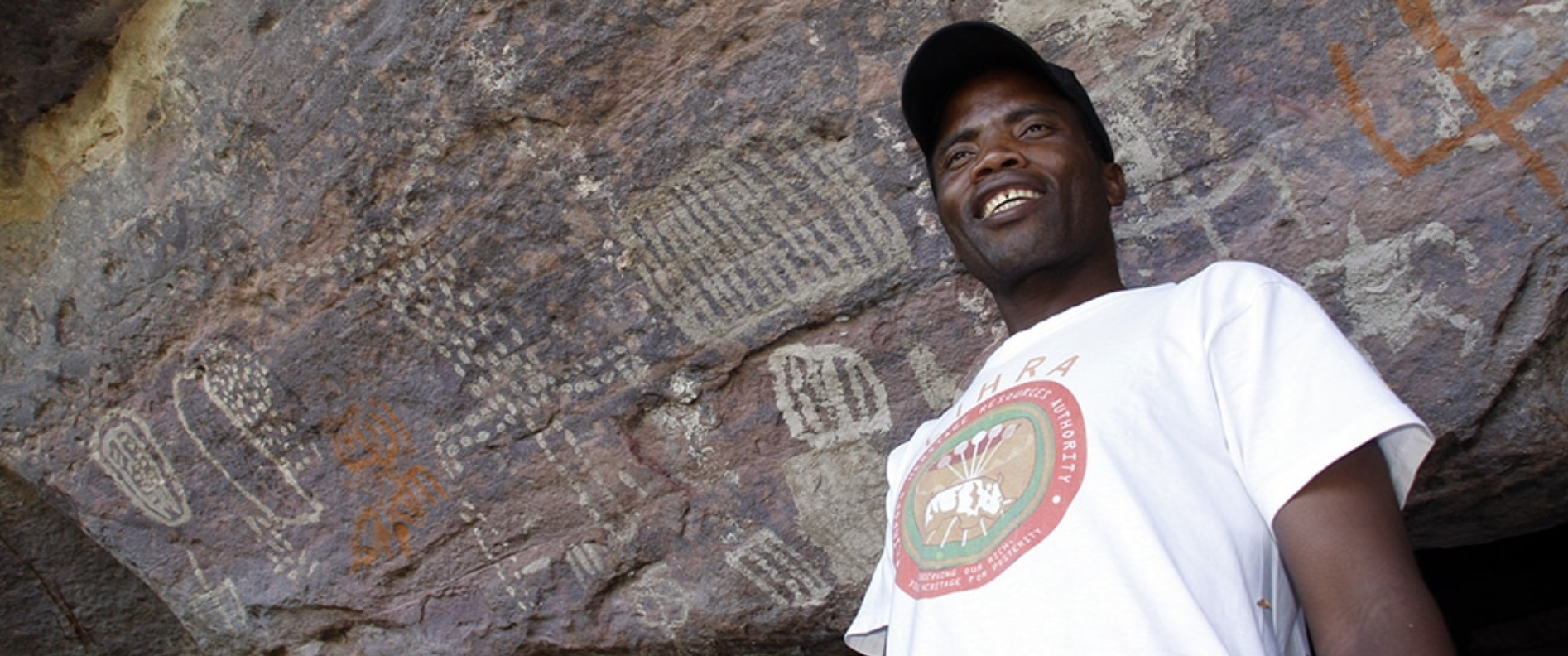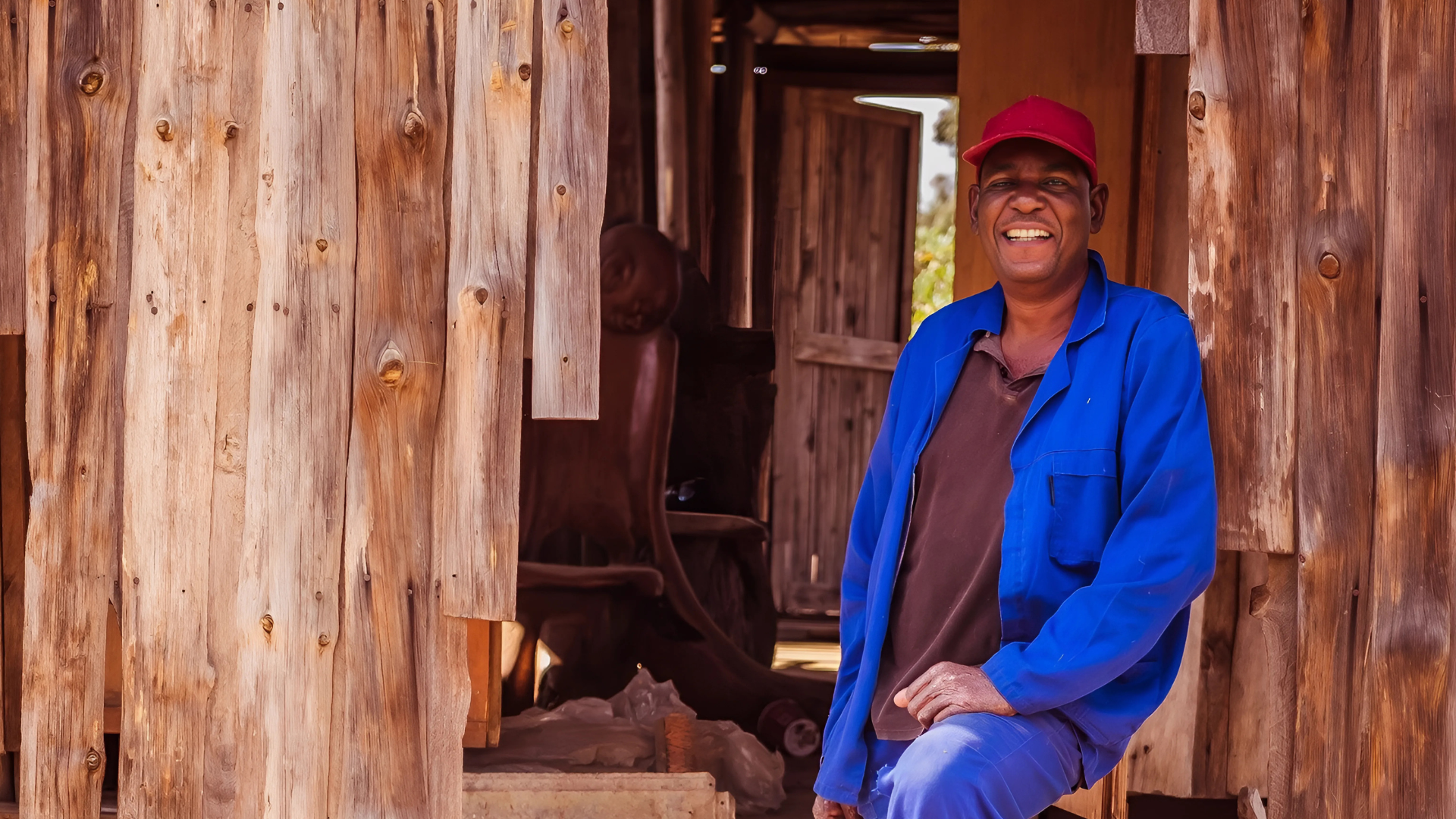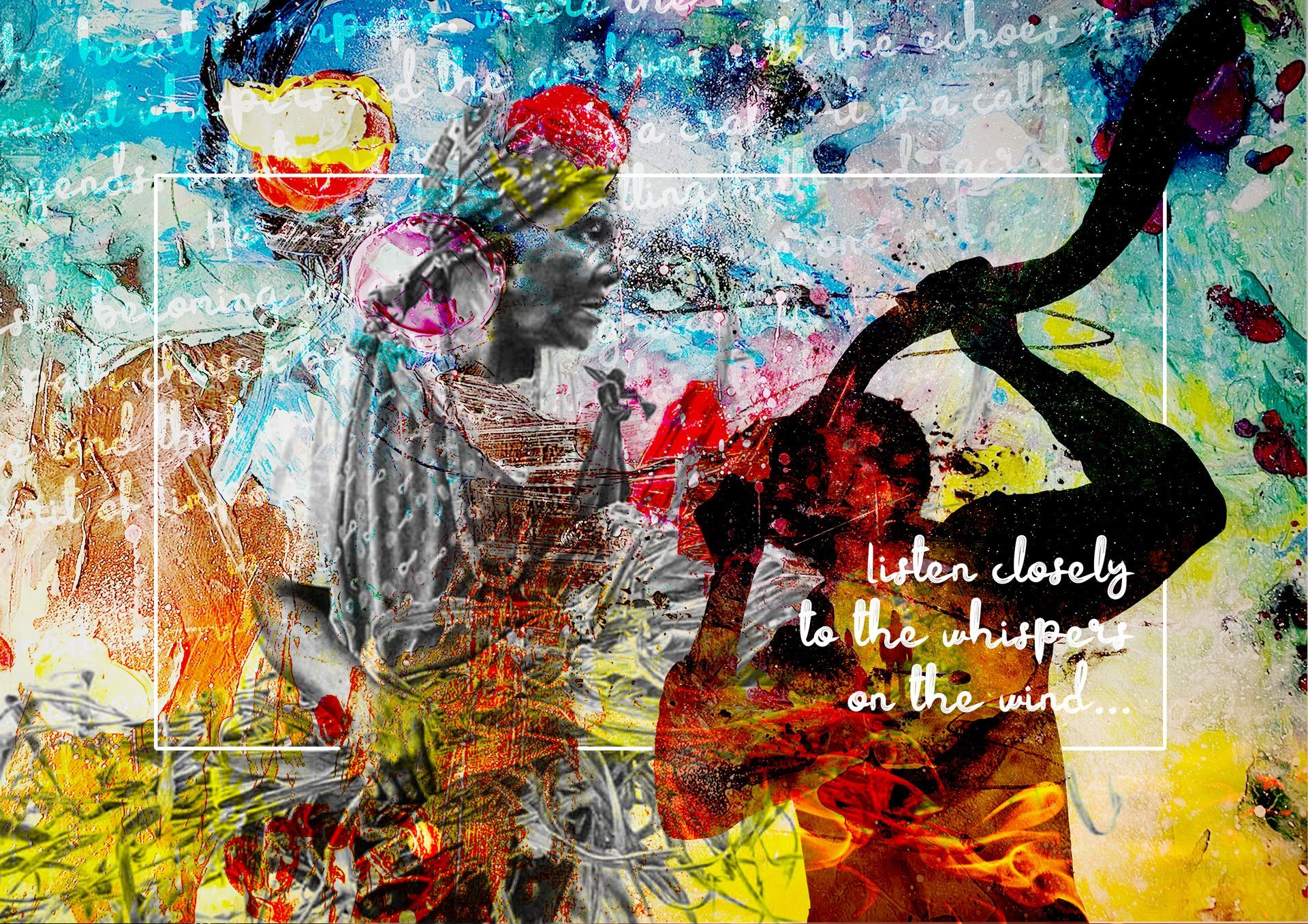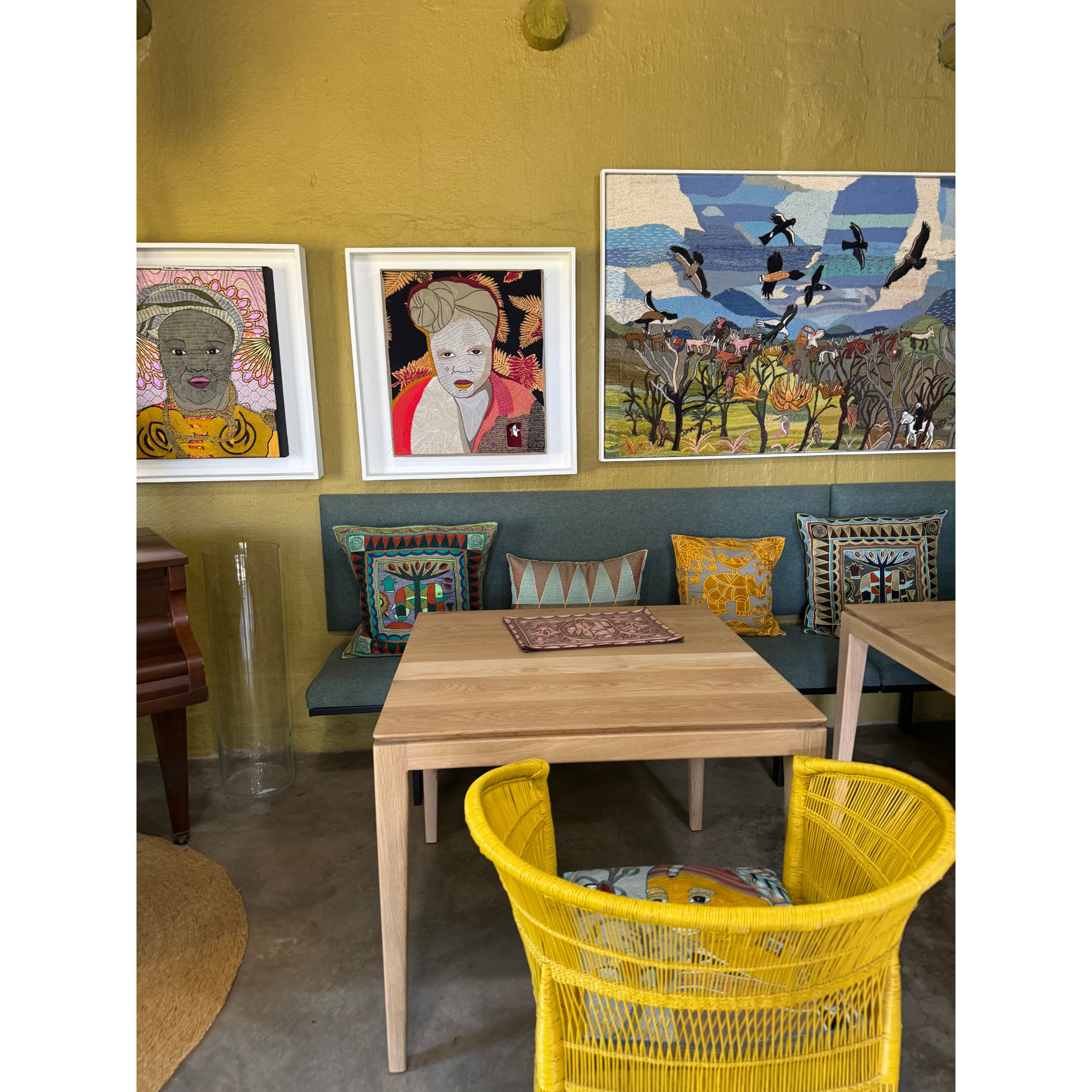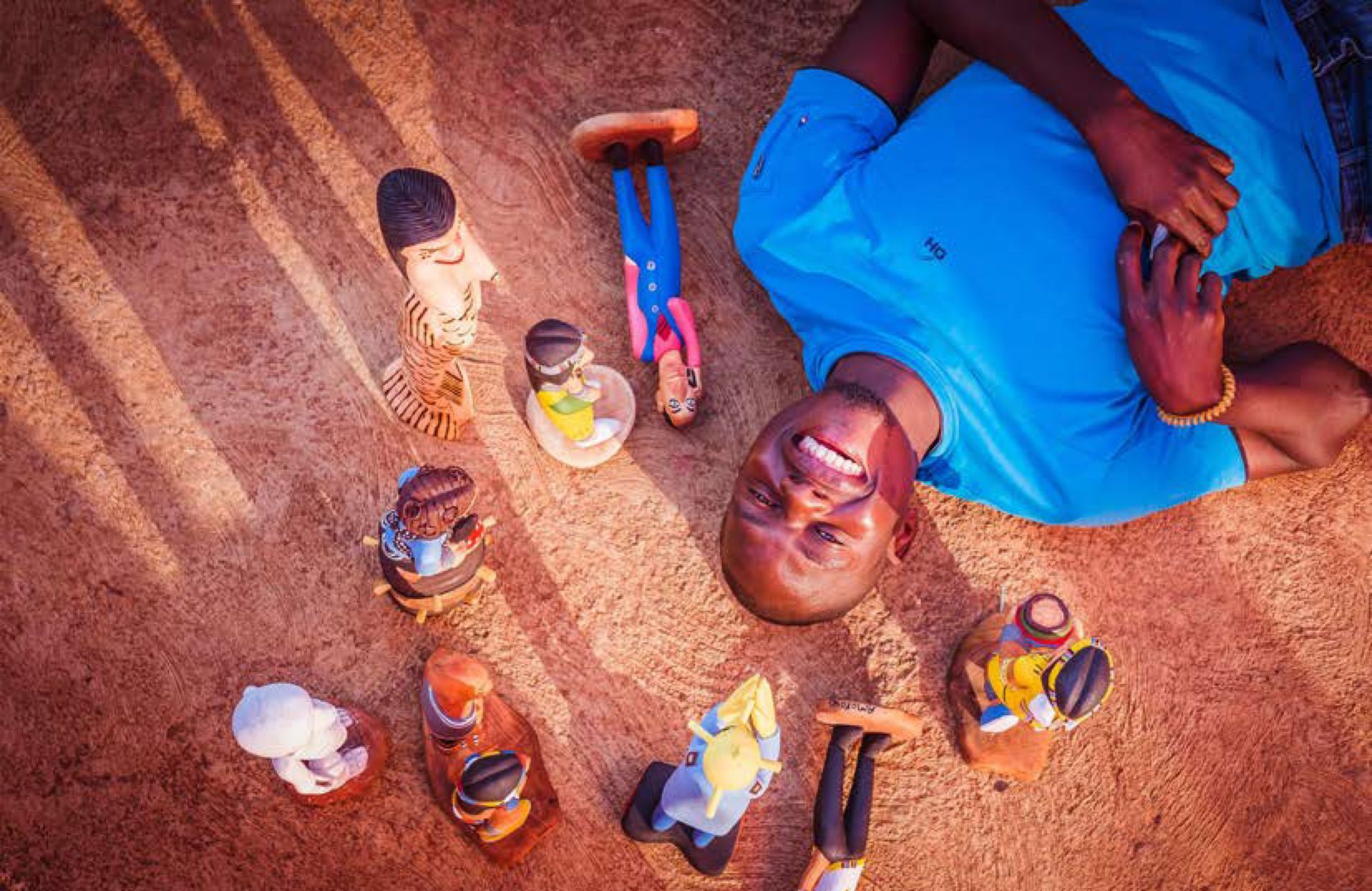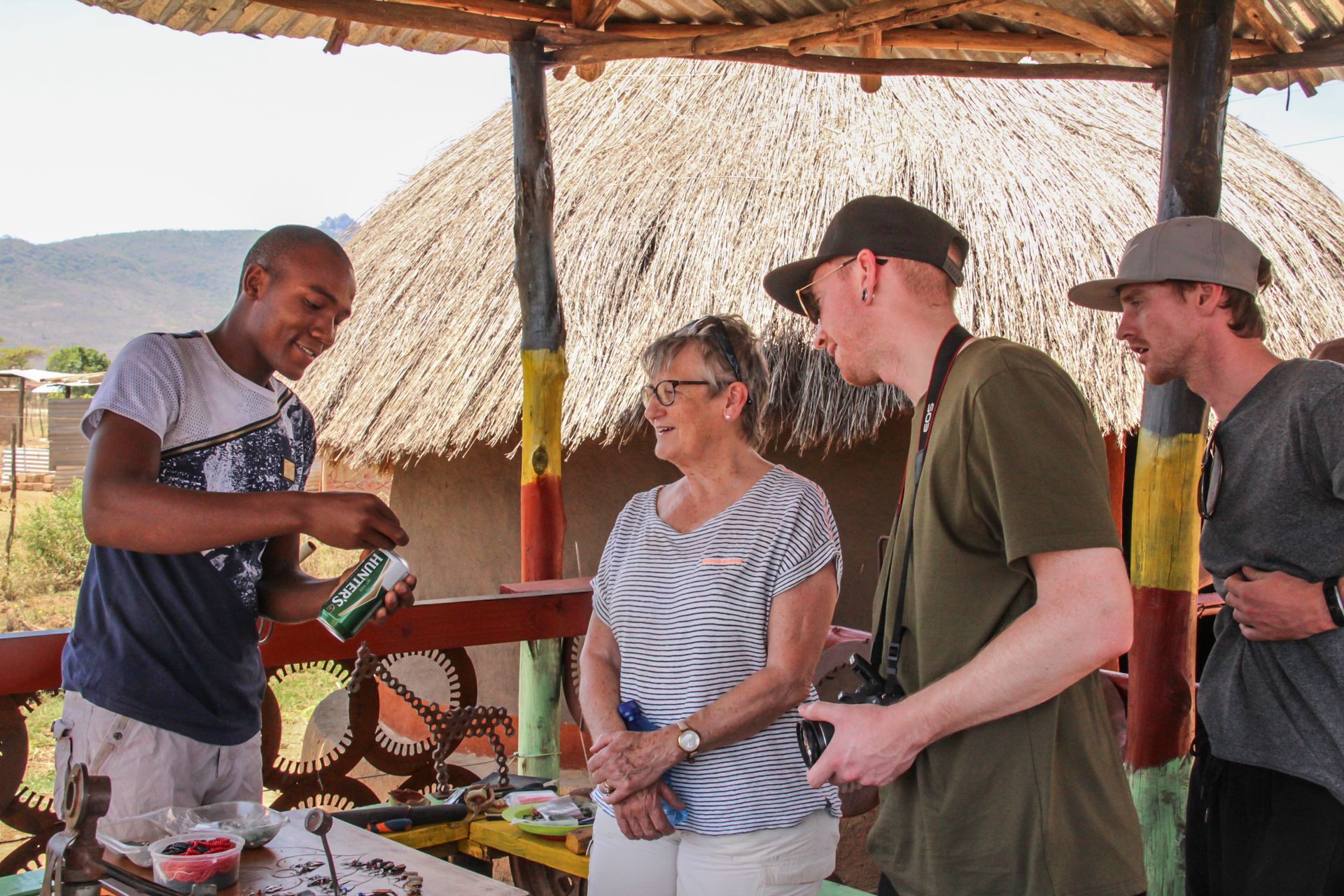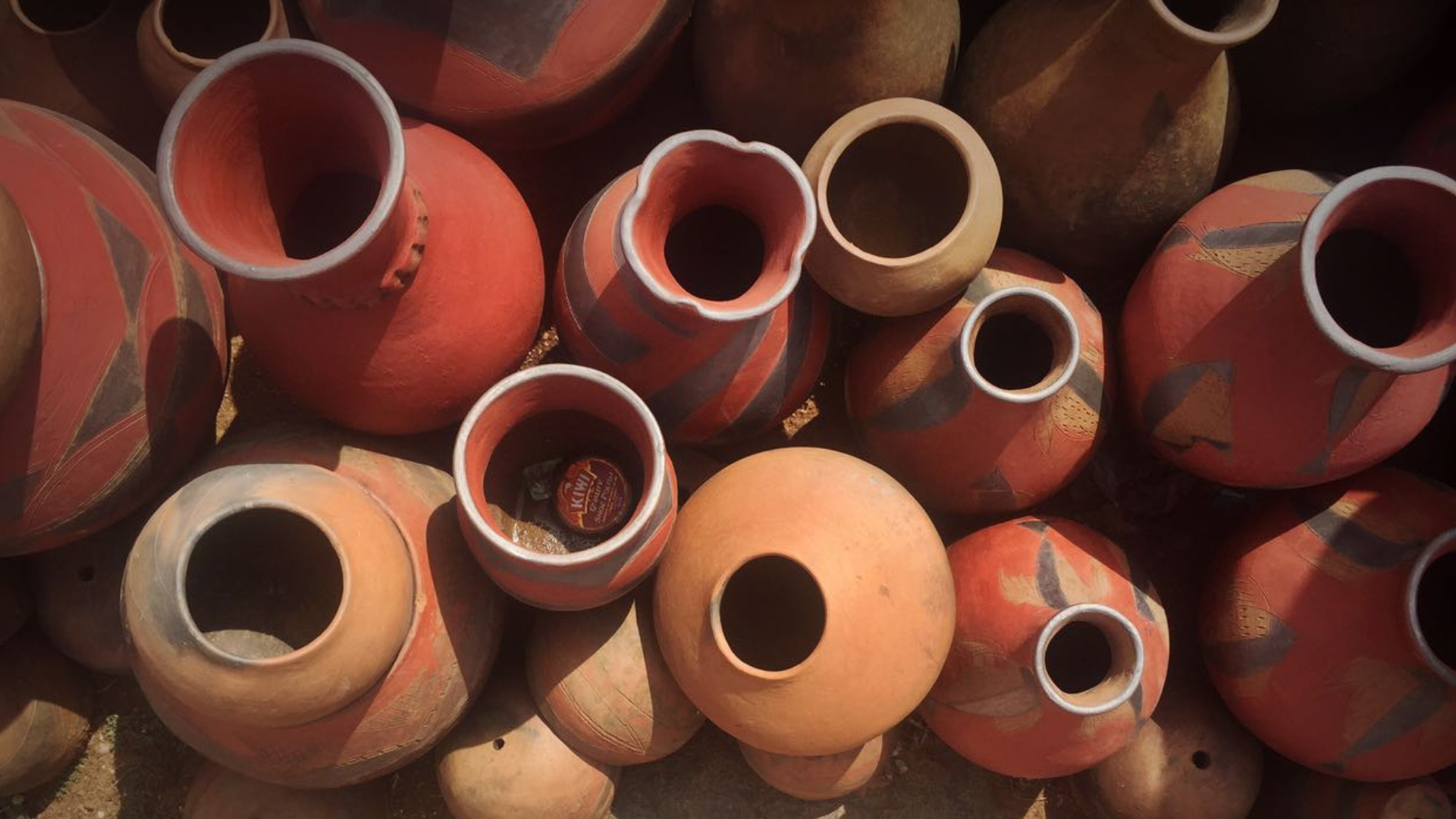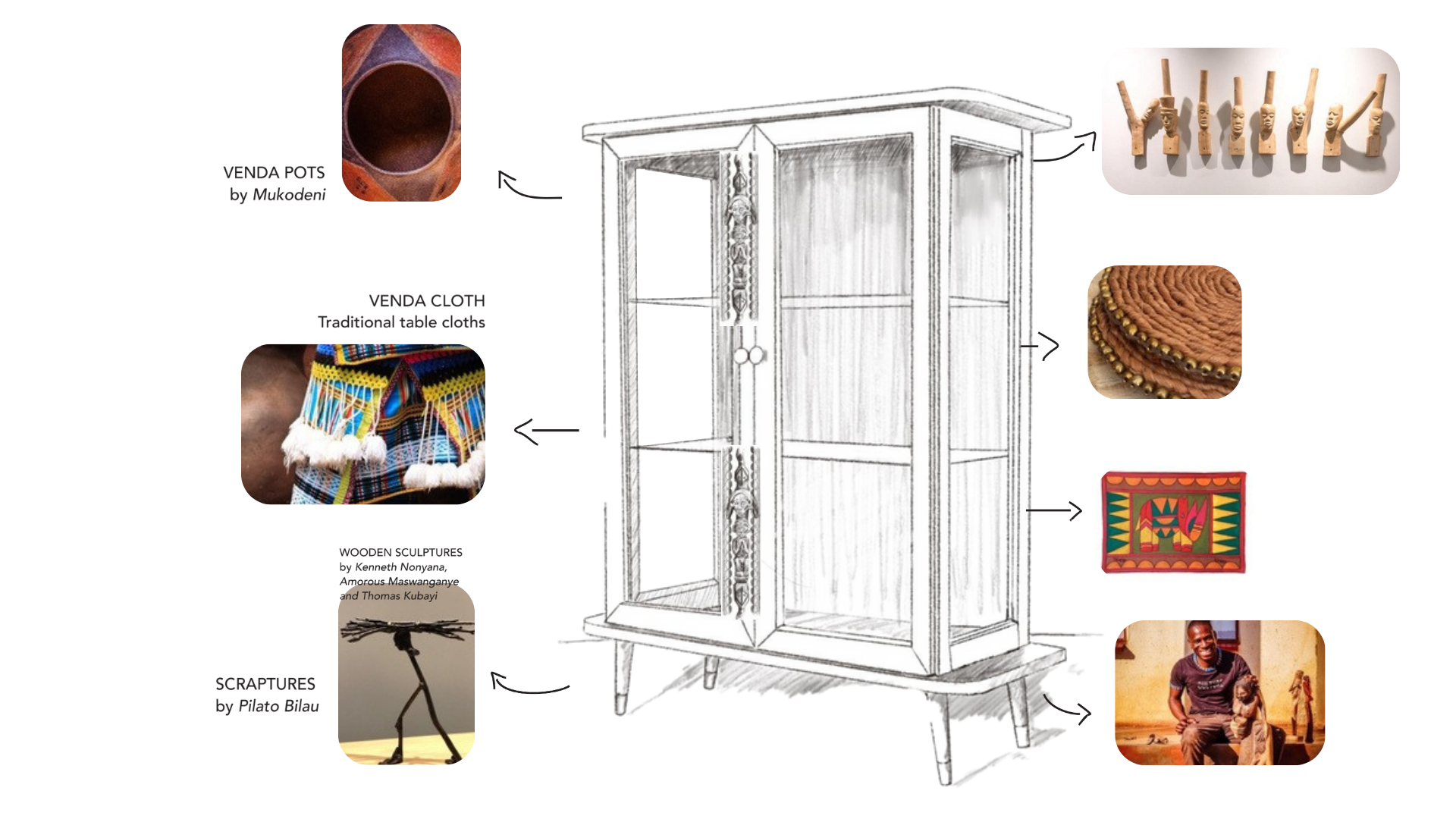The Ribola Route - By Bridget Hilton Barber
Woodcarving wonders and pots overflowing with talent — spirits come alive in the hands of Limpopo artists. https://www.dailymaverick.co.za/article/2024-03-30-spirits-come-alive-in-the-hands-of-limpopo-artists/
On the Ribola Art Route around Elim in the Vhembe district, visitors will be mesmerised by the creativity and talent of artists whose skills have been handed down through many generations.
The Ribola Art Route in Limpopo is a self-drive guided route that takes visitors into the home galleries of Tsonga (Shangaan) and Venda artists around Elim in the Vhembe district. The name Ribola comes from the distinctive peak which juts out in the Soutpansberg mountains, southeast of Louis Trichardt.
We meet Betty Hlongwani, our guide, at the busy crossroads in Elim, which is jammed with taxis and buses and the inevitable skorokoro being push-started in the rush-hour traffic.
The art route is not new, explains Hlongwani. Venda artists, as they were dubbed somewhat misleadingly, rose to fame in the 1980s when the art world “discovered” the likes of Jackson Hlungwani, Phineas Mativandlela, Phillip Rikhotso, John Baloyi and Noria Mabasa, who exhibited their work across South Africa and in galleries in Europe, Japan and the US. These artists taught and trained a new generation – some of whom we will see – and they, in turn, have passed on their skills.
The artists we visit were hit hard by the Covid-19 pandemic, but are being helped with marketing by Love Limpopo, which promotes immersive experiences in the area.
We are doing a whistle-stop tour, but visitors can also do immersive experiences such as sculpture and pottery workshops, fabric painting and traditional cooking.
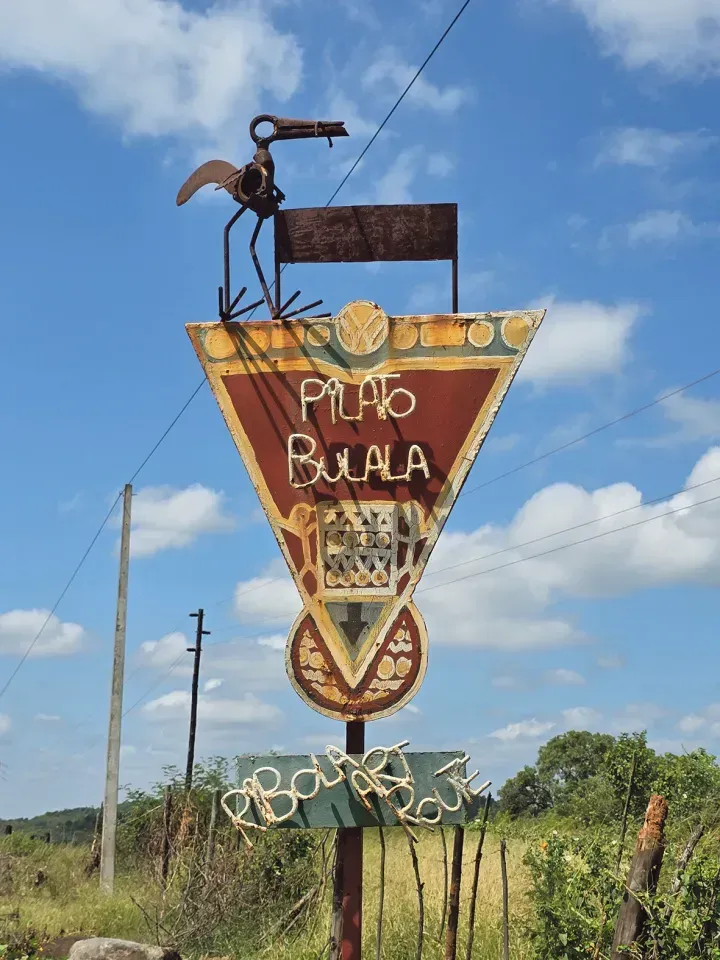
The signpost at Pilato Bulala’s place. (Photo: Bridget Hilton-Barber)
We set off for Mbokota village and our first stop, Twananani Textiles. One of the oldest projects on the route, it was started in 1983 with about 29 women who wanted to create jobs and preserve local creative traditions by producing tablecloths, cushion covers, beadwork and household accessories.
One of the original founders, Florence Ngobeni, says the project makes both batik-style cloth with Tsonga designs and symbols, and traditional block prints. The printing blocks and hand drawings are used together with candle wax on fabric, which is then hand-dyed or painted and made into clothing and homeware, often embellished with traditional beadwork.
Ngobeni shows us the workshop and adjoining shop, which offers wares for sale to tourists, hotels and lodges, and to locals for special occasions. There are now only eight women left in the project, she says. Young people are more interested in phones and tech than traditional culture.
Twananani Textiles shares premises with the Khomanani Preschool, a creche that cares for the village children. Colourful murals adorn its walls on the outside – one depicts Bart Simpson reading a Xitsonga book, symbolising the pull between past and present.

Bart Simpson reads a Xitsonga book. (Photo: Bridget Hilton-Barber)
A bird made from metal pliers sits atop the funky signpost that welcomes us to the home of Pilato Bulala, who has become famous for his “scraptures” – sculptures made from scrap metal. Bulala displays his art on a table outside under thatch.
He works as a part-time mechanic and sees his creations in the flotsam and jetsam he collects. An old gas cylinder is fashioned into a ball for a dung beetle to roll; a hammer is turned into a bird’s body; a wire spring becomes a monkey torso.
Bulala began making small cars and big statues – like the one of Archbishop Desmond Tutu outside his house – but then decided the works needed to be smaller so they could be sold and easily transported.
His work is also a contemporary commentary. His “scraptures” feature Caster Semenya, Rosa Parks on a whites-only bench and Jesus on the cross. There is also a bust made with bolts, screws and nails, which he calls Mechanically Minded.
Like most of the artists here, Bulala’s business was nearly destroyed by the absence of tourists for nearly two years during the pandemic. He relies on social media to market his art and has recently been given a card machine to facilitate sales.

Astronaut’ by Pilato Bulala. (Photo: Bridget Hilton-Barber)
Thomas Kubayi’s home and gallery is a fantasy land of wooden figures and creatures that stand against the blue skies and soft hills of Tshivhuyuni village. Kubayi is one of the more established artists along the Ribola Art Route. He is working on a new building when we arrive, and greets us in overalls with a great big darling of a smile.
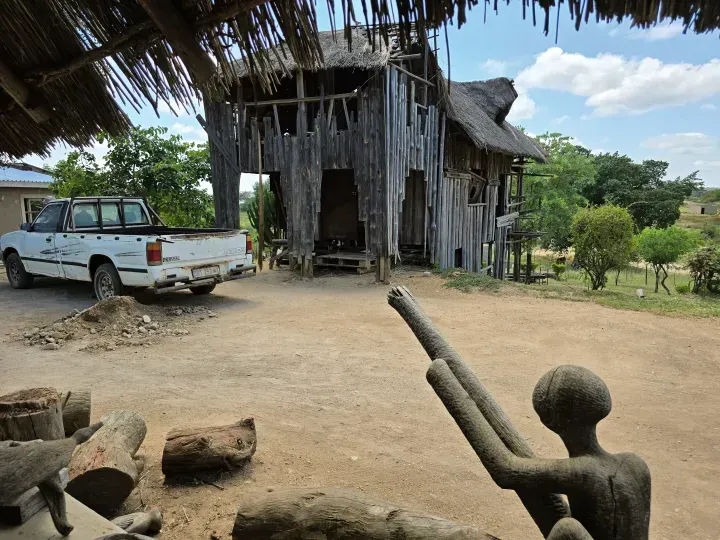
Outside Thomas Kubayi’s home and gallery. (Photo: Bridget Hilton-Barber)
He learnt his woodcarving skills from his father Johannes, he says, and in turn he has taught young emerging artists in the area. He forages in the nearby mountains and forests for wood to use, especially kiaat, silver terminalia and leadwood. He is inspired by traditional mythology and he also plays music and paints.
The roof of his gallery was partially destroyed by recent hard rains, but he shows us inside. There are elongated figures, long fish and wooden instruments such as guitars, drums, xylophones. We fall quiet as we feel the magic of his astonishing ability to hew art from wood; we hear the whispers of ancient spirits and ancestors in the sculptures and figures.
Kenny Nonyana, who lives nearby, is a pupil of Kubayi, and he and his dog Vin greet us and invite us to sit under a mango tree. We chat as he quickly carves a dolphin from a piece of old firewood, following the lines of the wood and its natural shape. Using a blade made from a car spring and an old bicycle frame, Nonyana’s precision is remarkable. He specialises in elegant, elongated figures, but also makes small wooden buttons and jewellery.
We stop for lunch at Caesar’s Place, a simple wood and thatch building that offers respite from the heat. Oscar cooks us chicken on an open fire, which we enjoy with pap, chakalaka and cabbage, plus the obligatory 2-litre Coke served in plastic wine glasses.
It’s hard to miss Mukondeni Pottery, which we visit after lunch. The shed-like building is surrounded by hundreds, if not thousands, of clay pots. Small pots, big pots, long pots, round pots, tall pots. Enormous pots evoking Arabian Nights, plain pots awaiting colour and pattern, finished pots baking in the sun, their graphite finishes shining.
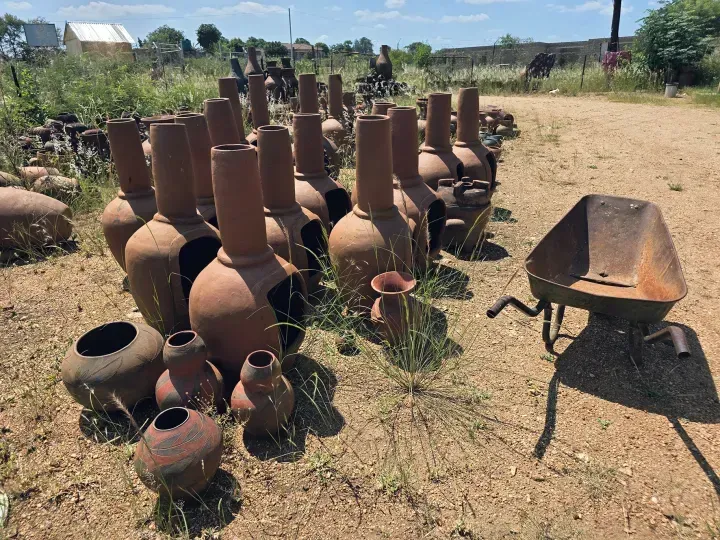
Pots of all shapes and sizes at Mukondeni Pottery. (Photo: Bridget Hilton-Barber)
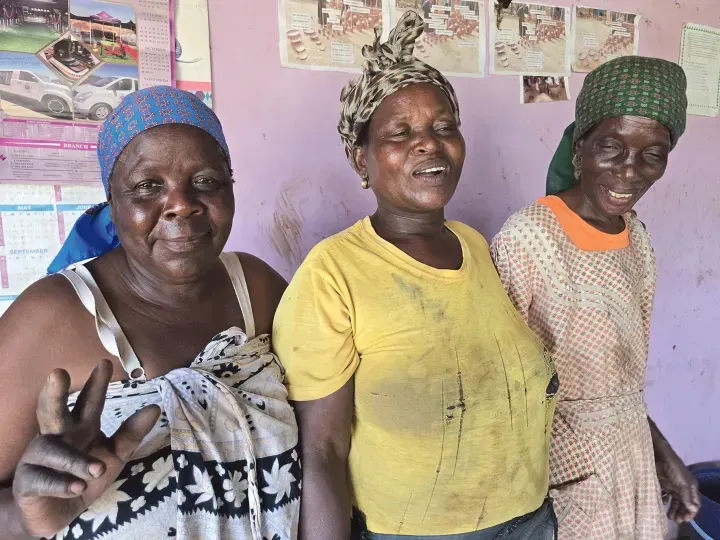
Women from the Mukondeni Pottery project. (Photo: Bridget Hilton-Barber)
Read more in Daily Maverick: Trails and tribulations — Limpopo villagers take to hiking to heal ‘weary souls’ and find lost link to nature
Inside the main building, we meet three gogos who are coiling pots and applying finishes. Piles of wet clay lie under blankets and in the corner is a massive kiln, recently donated by humanitarian organisation World Vision International, waiting to be fired up once load shedding is over. In a large open-sided building outside, we wander among huge pots and watch a woman take hers to be fired in a traditional open fire pit.
Started in 1977, Mukondeni is a women’s empowerment project that teaches and preserves the local pottery traditions. The women’s work is legendary in these parts – you can see it in homes and hotels across the province. But this project, too, is struggling to get young women on board (only 14 women work here now, compared with more than 30 a few years ago) and battles with admin and logistics.

David Murathi. (Photo: Bridget Hilton-Barber)

A David Murathi sculpture. (Photo: Bridget Hilton-Barber)
“My sculptures are born from dreams and ancestral spirits,” says Venda artist and traditional healer David Murathi, who is the last stop on our route. He lives on the outskirts of Mashau village in the Levubu Valley and learnt wood carving from his late uncle, Churchill Madzivhandila, while he was still at school.
Murathi is most famous for his mythological benches and stylised figures. He also does functional art like hooks, carved towel rails and mirror frames. DM
Visit the Ribola Art Route for more information. You can also visit the Facebook pages of Pilato Bulala, Thomas Kubayi, David Murathi and Kenny Nonyana (Slicar Ktn Nonyana).
Daily Maverick Article original here : https://www.dailymaverick.co.za/article/2024-03-30-spirits-come-alive-in-the-hands-of-limpopo-artists/
Authored by : Bridget Hilton-Barber
Date : 30th March 2024
